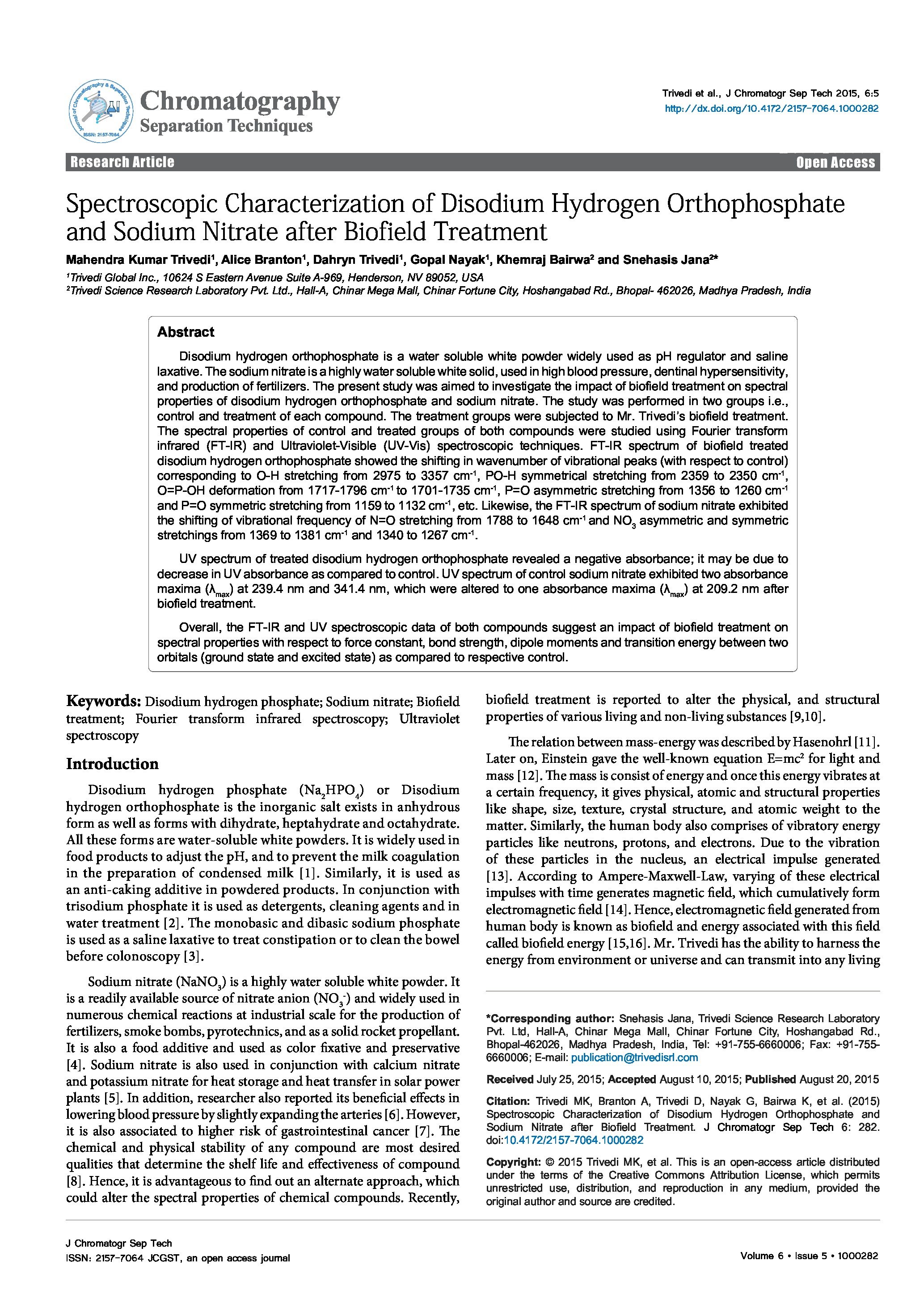Spectroscopic Characterization of Disodium Hydrogen Orthophosphate and Sodium Nitrate after Biofield Treatment
Affiliation
Trivedi Global Inc.; Trivedi Science Research Laboratory Pvt. Ltd.
Main category
Natural Sciences (Analytical Chemistry, Method Development (Chemistr)
Abstract
Disodium hydrogen orthophosphate is a water soluble white powder widely used as pH regulator and saline laxative. The sodium nitrate is a highly water soluble white solid, used in high blood pressure, dentinal hypersensitivity, and production of fertilizers. The present study was aimed to investigate the impact of biofield treatment on spectral properties of disodium hydrogen orthophosphate and sodium nitrate. The study was performed in two groups i.e., control and treatment of each compound. The treatment groups were subjected to Mr. Trivedi’s biofield treatment. The spectral properties of control and treated groups of both compounds were studied using Fourier transform infrared (FT-IR) and Ultraviolet-Visible (UV-Vis) spectroscopic techniques. FT-IR spectrum of biofield treated disodium hydrogen orthophosphate showed the shifting in wavenumber of vibrational peaks (with respect to control) corresponding to O-H stretching from 2975 to 3357 cm-1, PO-H symmetrical stretching from 2359 to 2350 cm-1, O=P-OH deformation from 1717-1796 cm-1 to 1701-1735 cm-1, P=O asymmetric stretching from 1356 to 1260 cm-1 and P=O symmetric stretching from 1159 to 1132 cm-1, etc. Likewise, the FT-IR spectrum of sodium nitrate exhibited the shifting of vibrational frequency of N=O stretching from 1788 to 1648 cm-1 and NO3 asymmetric and symmetric stretchings from 1369 to 1381 cm-1 and 1340 to 1267 cm-1.
UV spectrum of treated disodium hydrogen orthophosphate revealed a negative absorbance; it may be due to decrease in UV absorbance as compared to control. UV spectrum of control sodium nitrate exhibited two absorbance maxima (λmax) at 239.4 nm and 341.4 nm, which were altered to one absorbance maxima (λmax) at 209.2 nm after biofield treatment.
Overall, the FT-IR and UV spectroscopic data of both compounds suggest an impact of biofield treatment on spectral properties with respect to force constant, bond strength, dipole moments and transition energy between two orbitals (ground state and excited state) as compared to respective control.
DOI
10.18147/smn.2017/paper:694
Do you have problems viewing the pdf-file? Download paper
here
If the paper contains inappropriate content, please
report the paper. You will be redirected to the landing page.
